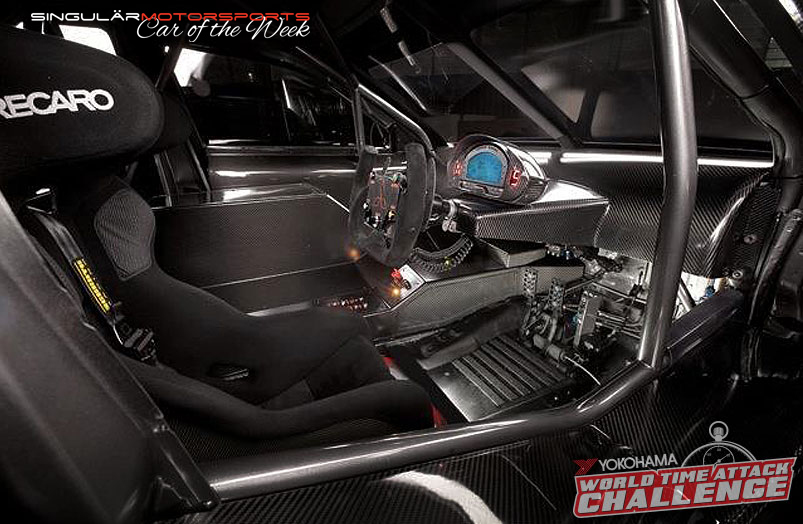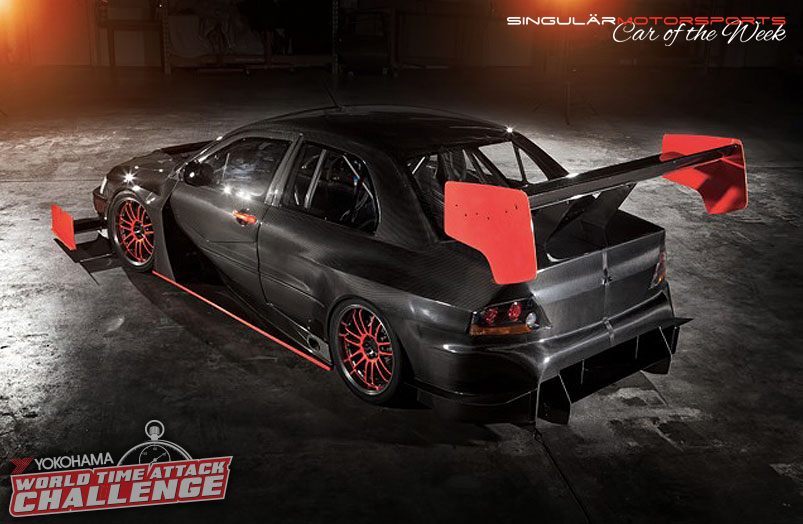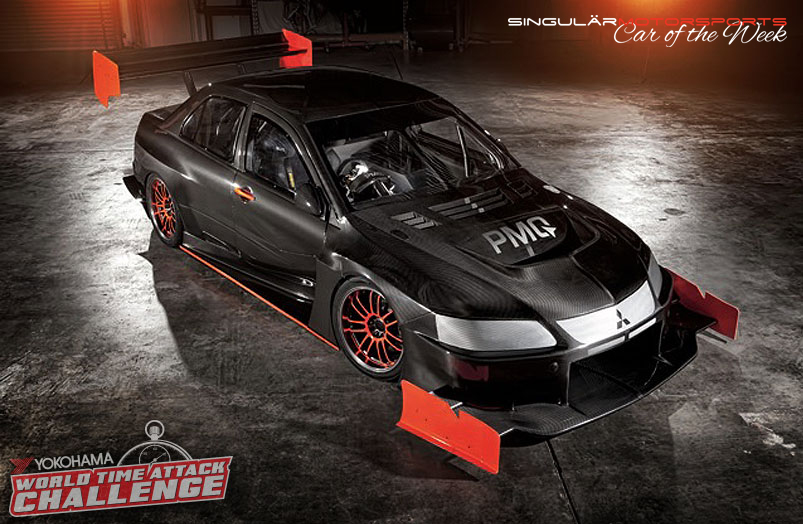
Hot Car Spotlight: PMQ Racing Mitsubishi Evo
Hot Car Spotlight:
This is a spotlight of a track/race car that we love. We’ll examine some of the details that make these cars so cool, from examples of cutting edge aerodynamics and engineering to historically awesome cars that influenced today’s race car design.
Written by: Ryan Passey
The 2014 World Time Attack Challenge is happening now!
At the time of writing this (near midnight on Thursday) I just finished watching the live coverage of the Friday practice for World Time Attack. It’s already near 6PM all the way around the world at Sydney Motorsport Park in Australia.
The “PMQ EVO M” – a car in the Pro-Am class (which means it is being driven by a privateer instead of a professional racing driver) – just set the fastest time of the day, ahead of the entire field of Pro cars.
So this is a perfect time to take a closer look at this car!
Owner Mick Sigsworth piloted this car today to a 1:25.276. To put that in perspective, the mighty Nemo Evo – which beat everyone else at the competition by 2 full seconds in 2013 – did so with a 1:25.0, and to date there is only one car to have clocked a sub-1:25 lap at this event (Tilton Evo, 2014).
So how is this car knocking on the door of the all-time record? Much of this has to do with the aero package. In the above photo, take a look at the front splitter. While the center portion is traditional splitter, the sides outward from the body are actually multi-element airfoils (wings).
The magic that we can’t see is the under-body aero, which is the part most teams are rather secretive about. If you crawled underneath, you could expect to see diffuser sections in the splitter, the splitter underside itself would likely have some slope to it to create downforce, and there would probably be forward elements controlling the air feeding to the large rear diffuser tunnels.
Inside the car, the seating position is shifted almost to the center of the car and rearward to improve the weight balance. Custom pedal box, steering column, gauges, etc. are all placed accordingly.
Nearly every panel inside is made of carbon, and all of the windows have been replaced with poly-carbonate to shed weight.
Looking at the photo below of the car from behind, you can again see the wing portions of the front splitter. The front fenders are dramatically vented – likely venting air from diffusers forward of the wheel well. The fenders vent onto a large side sill, which prevents air from slipping to the underside of the car and interfering with the under-body airflow.
Looking at the rear, we can see the ends of what are undoubtedly two large diffuser tunnels that extend far forward in the underside of the car. These two tunnels flank a shallower center diffuser which is height/length limited by components such as the differential and suspension mounting points.
The photo above also illustrates well how much carbon fiber went into this build to reduce weight as much as possible.
What’s incredible to many including myself is how much the PMQ team has stayed true to the overall shape of the Evo, while simultaneously achieving such a radically effective aero package.
Notice how tightly the body work fits with around the wheel/tire to prevent inward-flow of air which would create lift.
The PMQ team has remained fairly tight-lipped about many details of the car. While we know that the low-boost setting produces roughly 450 hp, we don’t have details about high boost. In addition to the dramatically improved aero, we know that since last year (when their best time was a 1:30) they’ve improved the suspension geometry and reduced the car’s weight by 100kg.
By the time you’re reading this, it will be Saturday in Australia and time for the drivers/teams to put it all on the line for that magic lap.
You can watch live streaming action here: www.worldtimeattack.com/live
There will be practice throughout the day. The Superlap Shootout begins at 5:45 PM with the Clubsprint class. If you’re on the West Coast like us, they are 18 hours ahead.





I love the look of EVOs but this thing looks so bad ass!